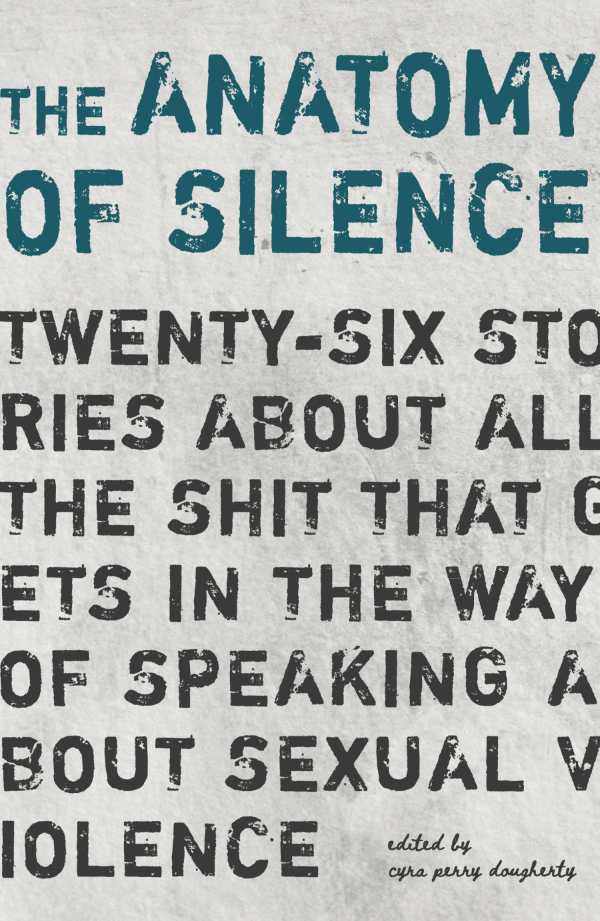The Anatomy of Silence
Twenty-Six Stories about All the Shit That Gets in the Way of Speaking about Sexual Violence
The Anatomy of Silence, edited by Cyra Perry Dougherty, comes with a trigger warning but won’t apologize for its content. A collection of twenty-six narratives on sexual violence in the United States and globally, it pushes back against a culture of silence that requires survivors to carry the shame and seeks to name sexual violence’s articulations and the personal and societal trauma it creates.
Contributors range from survivors to professionals in the field. The topic is considered from varied viewpoints including survivorship, allyship, complicity, intervention, support, reporting, and advocacy. The stories are similarly varied. Their forms include memoir, essay, reportage, opinion, and poetry, and entries often mix various modes to express sexual violence’s inexplicable, pervasive nature.
The book’s mission is unambiguous and necessary, yet the mechanisms of trauma create some inherent challenges in exploring and deconstructing this cultural epidemic. One contributor notes, “This is not an experience that can ever be shared in its totality—only fragments can be shown”; another says, “This fragmentation, this feeling, this inability to string words together [is] what trauma does to us.”
Memorable inclusions—like Melissa Dickey’s “Misogyny,” which recounts internalizing its rules, Lauren Spahn’s “Unintended Consequences,” about working at the the only sexual assault hotline in her county, Chelsea MacMillan’s “This Is Why,” about reporting a subway masturbator, and Ashley Easter’s “Community of Silence,” which looks at complicity in the evangelical Christian community—are resonant, with a strong sense of authorial voice and a specificity that forces consideration, if not outright confrontation.
Dougherty’s broad editorial vision creates space for silence to give way to speaking, allowing for contradictions and paradoxes in service of the larger goal of unearthing how sexual violence survives and thrives, both individually and systemically. At its best, The Anatomy of Silence demonstrates that there’s no aspect of society unaffected by this trauma.
Reviewed by
Letitia Montgomery-Rodgers
Disclosure: This article is not an endorsement, but a review. The publisher of this book provided free copies of the book to have their book reviewed by a professional reviewer. No fee was paid by the publisher for this review. Foreword Reviews only recommends books that we love. Foreword Magazine, Inc. is disclosing this in accordance with the Federal Trade Commission’s 16 CFR, Part 255.

